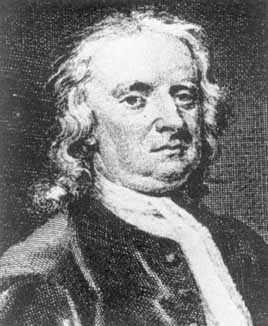Relativity
Click here to download a MS Word Version of this Module
Overview
While Einstein is the person most commonly associated with relativity, no discussion of relativity would be complete without at least a brief mention of Isaac Newton.

Born:
4 Jan 1643 in Woolsthorpe, Lincolnshire, England
Died:
31 March 1727 in London, England
Newton is most prominently known in this day and age for his theory of gravity and his 3 laws. Most people have heard the fable where Newton was sitting under an apple tree and an apple fell on his head and that was how he discovered gravity. This is not quite true however. Newton’s theory of gravity actually stemmed from the question, “Why does the moon stay up in the sky?” To account for this, Newton derived three laws.
1. A body remains at rest or moves in a straight line at constant speed unless acted upon by an unbalanced force. This is also referred to at the law of inertia.
2. Acceleration of a body is directly proportional to amount of force acting on it. (F = ma) In this account, acceleration is a change in speed and/or direction with time.
3. Whenever one body exerts force on a second body, the second also exerts an equal and opposite force on the first.
To accompany these three laws, Newton also came up with an explanation for using the three laws above. This explanation is based on the belief that space and time are absolute. That is to say, we will all experience space the same even though we may move through it differently. We will all agree that an object will have the same height, length, and width even if we are standing still or moving. The same goes for time. We will all agree on the length of an event no matter the duration of it. An example to further explain this is that of addition of velocities.
A tank traveling at a constant velocity v1 can fire a shell forward or backwards relative to it’s velocity. The velocity of the shell, v2 will be negative or positive relative to the velocity of the tank. If the tank fires the shell in the same direction it is traveling, the shell’s velocity will actually be the velocity of the shell leaving the gun plus the velocity of the tank. If the shell if fired the other way, the total velocity of the shell will be the velocity of the shell coming out of the gun minus the velocity of the train.
The ideal of absolute time and space is a key feature of Newtonian physics which helped Einstein derive his theory of special and general relativity in so much that he did not view space and time as absolute.